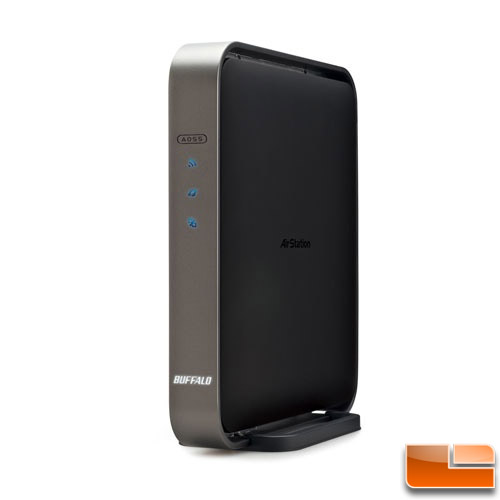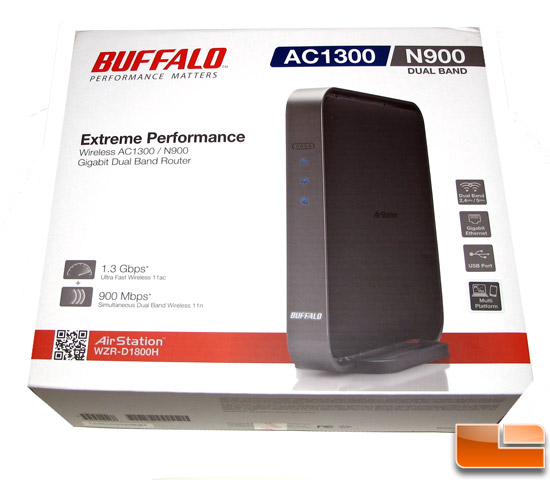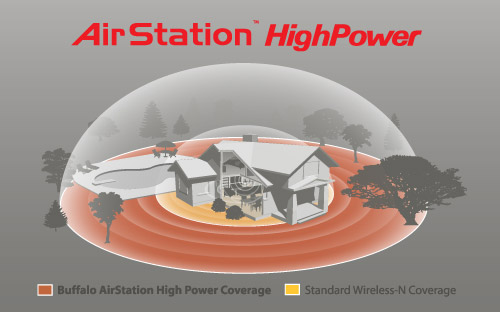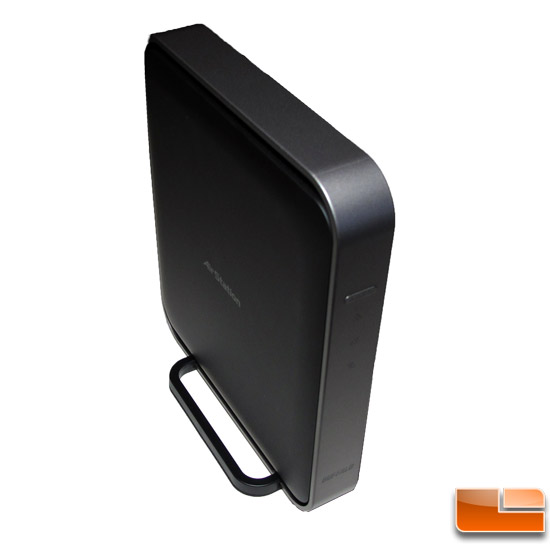Buffalo Air Station AC1300 N900 802.11ac Wireless Router Review
Buffalo AirStation WZR-D1800H Wireless Router



Now just because this router operates at such high speeds, it doesnt mean it will exclude legacy devices of the previous Wi-Fi generations. This means your devices that run on 3G and 4G networks will work just as well as they have before. Buffalo realizes that there are not many clients that support the 5G 802.11ac standard so Buffalo has also introduced the Buffalo AirStation AC1300 N450 media bridge. This media bridge is used to make sure the games and other entertainment you have can proficiently connect to the speed of the Buffalo AirStation AC1300 router.
Lets get back to the router which, when we look at the back, is equipped with four Gigabit LAN ports, one WAN port, and a 2.0 USB port that can support an extra hard drive or thumb drive. Connecting this router and other AC devices to the internet is as easy as press the AOSS button on the front of the device. The router is actually packed full of quality features.
WZR-D1800H Feature Highlights:
- Wireless 11ac
- Simultaneous Dual Band Support
- 5 GHz Speeds up to 1300 Mbps
- 2.4 GHz Speeds up to 450 Mbps
- 5 Gigabit Ethernet Ports
- Standard Compliance: IEEE802.11ac(Draft 2.0)/n/g/a/b
- Frequency Range: Concurrent Dual band 2.4 GHz / 5 GHz support
- Wireless Security: WPA2-PSK(AES, TKIP), WPA-PSK(AES, TKIP),128/64-bit WEP
- Standard Compliance: IEEE802.3/3u/3ab
- Speed and Flow Control: 10/100/1000 Mbps(Auto Sensing)
- Number of LAN Ports: 4 Ports(RJ-45 Auto MDIX)
- Number of WAN Ports: 1 Port(RJ-45 Auto MDIX)
- Setup Utility OS Support: Windows 7 (32/64-bit), Windows Vista (32/64-bit), Windows XP, MacOS X 10.4-10.7
- Power Consumption: 11.4 W (Maximum)
- Dimensions: 8.4 x 7.2 x 1.3 in
- Weight: 1.13 pound (18 oz)
- Operating Environment: 32-104F (0-40C), 20-80% (non-condensing)
- Power Supply: External AC 100-240V Universal, 50/60 Hz
- 1 x USB 2.0 – Supports NAS function and print server
With all of these features, you would think the new 5G devices would cost more than previous generations networking hardware, but the Buffalo AirStation AC1300 N900 WZR-D1800H wireless router and its client carries a very competitive $199.99 MSRP and can be found for about $165 at your favorite retailer.
If you are like me, you might not have heard too much about the next generation Wi-Fi standard also known as 802.11ac. Here is a very quick overview: The 802.11ac wireless standard is designed to provide Gigabit speeds, better range, more spatial streams, and is backward compatible. The gigabit speeds are created by utilizing the 5GHz band which gives routers 3 times the speed of the 802.11n. With the frequency range being at 5GHZ instead of 2.4GHz, most household devices should not degrade the wireless signals.

Essentially, 802.11ac uses wider channels to move more data. The 802.11n relies on 40 MHz channels whereas the 802.11ac doubles that to 80MHz by default with the option to use 160MHz channels. With multiple antennas and twice as many spatial streams available, the quality of reception should increase and you can use AC at further distances than that of Wireless-N or G. With eight spatial streams the 802.11ac can reach theoretical speeds of up to nearly 7Gbps! The 802.11ac engineers have even included algorithms for beam forming which fixes the phase conflicts providing a stronger signal and more stable throughput.

Powered by a Broadcom chip, the Buffalo AirStation AC1300 is intended to be the center of you networking universe. On the next page we will take a look at what Buffalo gives you out of the box and how the user interface looks.

Comments are closed.